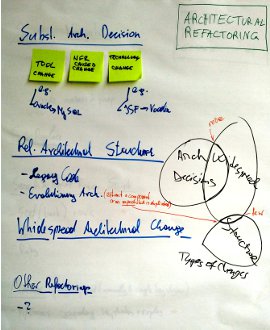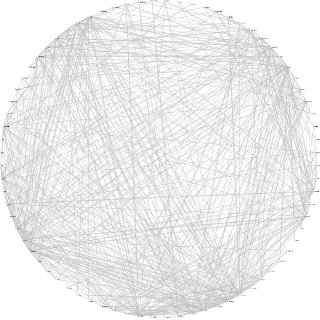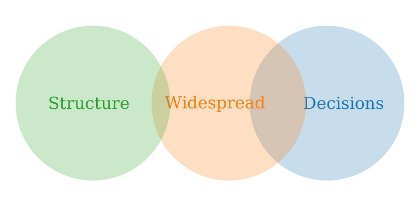I am happy to announce my next guest in the
series of interviews on ethics in Software Development and
meaningful work:
Johannes Link is a well known XP practitioner, trainer and frequent speaker from Germany.
Johannes, please introduce yourself.
I have been developing software in a professional context for more than 20 years and that is still one of my passions. My understanding of how to do programming was largely shaped by
Extreme Programming. Especially its focus on quality and close collaboration are an intrinsic part of how I look on everything software-related.
 I know that you are concerned with ethics in Software Development. Why do you care?
I know that you are concerned with ethics in Software Development. Why do you care?
I think that everyone's personal views on ethics, morale, purpose of life, "good and bad" should also be reflected in their professional activities. Thus it is obvious to me that I cannot support activities in my job that I would reject when discussing politics with my friends. It came rather as a surprise to me when I learned that other people intentionally differentiate between their personal opinions and their professional activities.
What other topics are you concerned about?
Besides my intention to not harm society I would love to do something meaningful or even "to give back" to the world. I guess it came with age and with having children: Just implementing the next e-commerce shop or the next workflow-system for travel expenses won't excite me any more - regardless of the technology in use. That is why I am always looking for "purpose" in the projects I work on; it might be a personal purpose - e.g. building a new tool to make my life as a developer easier - or a more general purpose like teaching kids the fundamentals of programming.
There is also a "meta"-topic: Raising the awareness in our industry that what we do and how we do it shapes the future life of all. That is why we have to start thinking about responsibility in all our projects, and that contains aspects like security, usability, accessibility and risks.
Outside the topics discussed so far, what do you consider the biggest challenges (for humanity) of our times?
Preserving a world that is worth living in. It is not only the climate that is at stake but also democracy and other traits of humaneness that came with the
Age of Enlightenment.
When I talk to people, many express concern about meat mass production or pollution, but almost nobody really acts on it. What could we do to engage in these topics?
I am probably as lazy as most when it comes to getting into action. I donate money and I sign petitions, but does that really help? Maybe it is even corrupting the purpose because it makes us feel better and takes some of the uneasiness away that could otherwise push us to real action.
That said, I do not think we can (and should) all fight the same battles. Choose one or a few topics in which your interest or your anger is the biggest and tackle those. As for me the rise of nationalism and xenophobia inside many countries that seemed to be very stable democracies until recently is finally driving me to speak up. Just watching is no longer enough.
 As a software developer, what options do we have to act and do "the right things"?
As a software developer, what options do we have to act and do "the right things"?
You always have the possibility to question certain aspects of your work. For example, when you are supposed to collect vast amounts of data that could potentially be used to harm people, you can raise the related ethical and legal issues with your employer. In the end you must be willing to suffer the consequences and not all of us have the luxury (the savings) to do that.
What looks like technical decisions to us might have a real consequence for others: Choose a certain browser as target platform and you exclude some users from using the product. Switch from on-premise deployment to a cloud solution and you make some operation staff redundant. That is why I think that we cannot hide behind the "It is just technology" argument.
Whatever we do we should always ask ourselves:
- Is there a conceivable way that the system to which I contribute will intentionally or unintentionally harm others? If so, how can it be changed to (at least) reduce the probability?
- Am I competent enough to take the technical decisions that I take? This is especially relevant when it comes to security because even as senior developer it is hard to keep up-to-date in that field.
- Is the quality we build high enough to not put the system's purpose at risk? This decision is so context-specific that we often get it wrong when switching domains, e.g. from web store to medical device.
I run into quality conflicts with my customers from time to time. Sometimes, as a last resort, I might refuse to go with a Product Owner's prioritisation because I consider fixing a certain technical debt or design flaw crucial for either the project's sanity or the team's capability to change the system in the future. Saying that I will not continue with the current prioritization can get me the accusation of blackmailing whereas I consider it to be an additional piece of information for the business side. And yes, in those cases I will stand with my word if we won't be able to find a common resolution; so far that happened only once.
How do you think about selecting industry, customer and project based on your values?
Well, we have to earn our daily pasta. When arguing these topics with others, I had to concede that the decision if a certain industry, company or project is in alignment with my ethical views is sometimes very tricky or even undecidable. It can be difficult to see if my contract is contributing to a good or a bad purpose. Sometimes it is obvious. In those cases you have the choice to quit a contract and to tell others why you did it.
There are a few industries that are no-go areas for me. In most other cases it is the concrete project that makes me decide. It is easier for me as an independent developer than it is for an employee, though.
Since the amount of information you get in advance of joining a project is somewhat limited I tend to find out more details through my network or go with my gut feeling. It has not happened yet that I wanted to leave a project for ethical reasons afterwards.
 Let's be more specific: Would you work for an animal factory? Would you work for a company producing equipment for an animal factory?
Let's be more specific: Would you work for an animal factory? Would you work for a company producing equipment for an animal factory?
Animal Factory: No. Company producing equipment for an animal factory: I might not even know. If I knew, it would probably depend on the type of equipment since a lot of equipment is very unspecific, e.g. an electric engine can be used for all kinds of things.
Do you have problems with any industries?
There is currently only one area that I would reject on principle: Military and weapons. I consider intelligence organisations to be part of military so add that to the list. And there are a bunch of companies whose offers I would reject without thinking twice.
I struggle with the distinction of "working for" and "buying from". Buying also means supporting, but I am certainly less consequential there.
Did you ever reject a project, that would bring you money based on your values?
Yes. I was recently contacted by an agent offering me a very interesting position both location-wise and considering the technologies in use. When I was told the name of the customer however, I had to reject, since the company's business model is known for harming people and mostly serving the rich. When I told the agent that I won't take the position "out of principal considerations" she was astonished and I explained my motives. She seemed to be really surprised that anyone would do that.
On the other hand, what would be industries, customers and projects that you would love to work on?
The medical field has a lot of potential to improve the lives of many. But the current equilibrium of forces usually takes care that the established industry players win and the patients lose. So that is tricky and I have been working in medicine-related projects a few times. I would love to do paid work for NGOs that work along my personal political views. I have not seen a single project in that area, though.
Thank you Johannes for sharing your views on this important topic.
 1.1. Tool Change
1.1. Tool Change 2.1. Cleaning up Legacy Code
2.1. Cleaning up Legacy Code



















